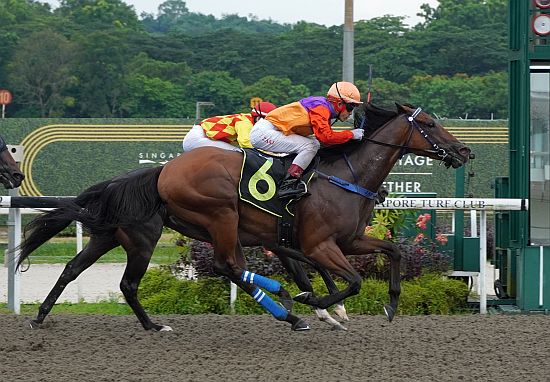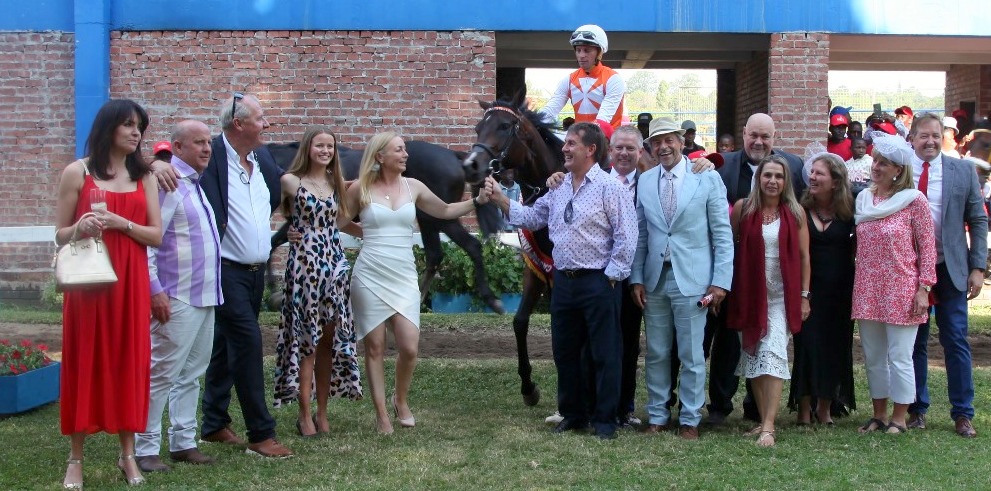Horseracing has pulled one over rugby in the public relations stakes with the news that the SABC will be broadcasting the Vodacom Durban July this year. This was after last Saturday’s Springboks- England test was not aired on the public broadcaster,and was instead clinched by e.tv for a late night delayed broadcast.
The vast differences in standing in the public pecking order of rugby and horseracing is amply demonstrated by the fact that Supersport, who have the rugby broadcast rights are able to hold the entire nation to ransom, and sell off to the highest bidder, while horseracing pays big money to the SABC, for the right to have itself exposed for a few hours on the free-to-air national broadcaster.
I don’t fully understand all of the politics and economics at play, but yes the simple truth is that the broadcasters fight over and pay for the attention of the oval ball sport,while the sport of kings pays those same broadcasters big money to allow us the privilege of being beamed to their viewership – and that on our big days that suits them. Bloody hell, I say.
The SABC apparently lost out after their decision not to show the Springbok rugby test matches and e.tv reached a once-off agreement to broadcast Saturday’s second Test. Frankly I wouldn’t sympathise with the public broadcaster or the South African Rugby Union, who expressed their ‘disappointment’ that the entire nation would not be able to enjoy their heroes in action.
It is all about the money, and we all know that.
Gold Circle confirmed on Monday that the SABC would be covering the Vodacom Durban July from 14h30 on the afternoon.
Apparently the SABC handles the production on the day, assisted by Dieter Wohlberg, Tellytrack OB Manager . In return the entire show is enhanced by the SABC’s t access to their greater production resources – like extra cameras, for example.
Whatever may have been paid for the rights to reach the masses, it is nobody’s direct fault that racing is not in a position to dictate terms – yet, anyway. The national broadcast also represents a great opportunity to take the show to the masses and one hopes that there will be plenty of pre- publicity and hype, as it is a bit late to restrict the promo to Tellytrack and leave it to two hours prior to the race to expect all those novice viewers to go out and find a tote to take their R2 swinger.
The use of favoured out-of-province presenters on the feature days has been debated on the ABC forum recently and I asked Phumelela Media Executive Ken Rutherford to clarify the position on using ‘away’ presenters on the big days: “ In general, we try and use the local-based presenters on their big days – ie, Grant and Stan at the Met and Laff and Deez at the July. However, often these guys have other responsibilities on the day – ie, Stan might have a runner; Grant might have Klawervlei duties. Hence we do a roster a week or two in advance. For instance, our July running order was done about a month ago, and we then plan how many gaps we need to fill. We do try and utilise Neil Andrews as an anchor on the big days, when he is available. For the current Durban season, Gold Circle specifically requested that we use Julie Alexander as the anchor for their big days,” he said.
Rutherford is an interesting guy to talk to as one only then begins to comprehend the challenges and dynamics of the racing broadcast model. It is not a simple case of manning a studio and sending out a few cameras to racecourses. Maybe we should be giving the Rivonia boys a break instead of criticising at every turn?
Rutherford advised that Tellytrack were in the process of concluding a deal with Multichoice DSTV to keep the racing broadcast on Channel 232 for another 3 years.
“ Going forward, I believe that horse- racing has to re-invent the way we provide our pictures to our customers. Web-Streaming is one option with improved broadband (capacity/ cost/ speed) making this very much a consideration. We live in exciting and challenging times,” he said.
Dressed For Success
While the July is just around the corner, Europe’s flagship racemeeting gets under way earlier this week, and besides the big news surrounding Frankel and Black Caviar, the introduction of the Royal Ascot Fashion Police is likely to turn heads.
We have to doff our hats to the Brits when it comes to creating an occasion. In South Africa we battle to control drunken louts pouring liquid over the heads of our guests of honour and well-dressed wannabe traffic officials directing us and begging for R2 in the car park. But in Britain they cover everything – right down to ensuring ladies wear underwear, but not ‘knickers that show’, and also cover their midriffs.
The introduction of dress code controls will affect thousands of racegoers who use the grandstand during the week-long event in June, attended each day by members of the Royal Family.
It will call for men to wear a shirt and tie, with a jacket, while it is expected ladies will be given strict instructions on skirt length and the width of dress straps. The stringent dress code for the royal enclosure, where only morning suits and hats or “substantial fascinators” is acceptable, has also been reviewed.
An Ascot spokesman admitted recently that dress codes had been relaxed in an effort to attract more people to the 300-year-old event. But he conceded that after giving an inch some had taken a mile, and arrived as if they were going to the beach.
Details of the new dress code include the fact at sports attire, jeans and shorts are banned.
Organisers have decided to hand out pashminas, fascinators and ties to visitors who fail to meet the stringent new style rules.
The Fashion Police comprise a team of 30 officers who will man the entrances, tasked with spotting the inappropriately attired and bringing them up to the required sartorial standard.It doesn’t specify exactly how they intend to check compliance on the knicker issue!
They will be equipped with baskets of accessories to enforce a new dress code which stipulates that shoulders and midriffs are covered, jackets are worn with ties and headgear is in place.
Nick Smith, spokesman for Royal Ascot, said: “We have done deals with various manufacturers and we have absolutely thousands of fascinators. There will be a full range because we know ladies won’t want to wear a pink hat with an outfit that doesn’t suit, for example.
“They are not designer items and they are not going to win any fashion awards. They are reasonably cheap. Likewise the pashminas for covering shoulders – we have them in a range of colours and they’re not the highest quality one can get but they will serve the purpose.”
“This is quite a sensitive issue and we don’t want to offend anyone. The assistants will be in uniform but they won’t be overtly branded with sashes or anything like that.
“If they see somebody in the queue for the grandstand who isn’t wearing a tie, for example, they will go up to them and say very politely, ‘You might not be aware but there is a change of dress code this year’ and then will offer a selection of ties.”
Mr Smith said: “In the past few years we have had more and more letters from people saying, ‘Royal Ascot is special – please make sure the dress code is observed’. They say Royal Ascot should be different from other race meetings, and is a formal occasion to be proud of.”
At least we can relax a little more and let the hair down at the July!
Shaky Start
We observed an interesting incident on 13 June at Clairwood in the fifth race, with the Charles Laird horse Northern Emperor getting his leg stuck over the gate while the field loaded.
The jockey dismounted, the handler got the horse out of the situation, the jockey remounted and the field were allowed to jump.
It was a non -troublesome field of generally mature horses and we found it quite odd that the Vet not have trotted him. We would not have deemed it the starter’s decision to make a call on a horse that was entangled in equipment as he could have been injured.
We put the apparent deviation in procedure to the National Horseracing’s new CEO designate Denzil Pillay, who responded as follows:
“ The question was asked of the Vet and he explained that he witnessed the incident and that the horse had stood on his hind legs and gently got his leg over the partition (almost in slow motion).The horse stood quietly and was relaxed, and that this section of the stall is heavily padded. The leg was gently lifted and placed back over the partition and the horse taken out for the rider to remount. There was, in his opinion, no risk that the horse could have injured himself. He stated that if the horse had played up and panicked in any way then this would have warranted it having been trotted and thoroughly checked as is procedure. I trust that this answers your query.”
Subject closed.








